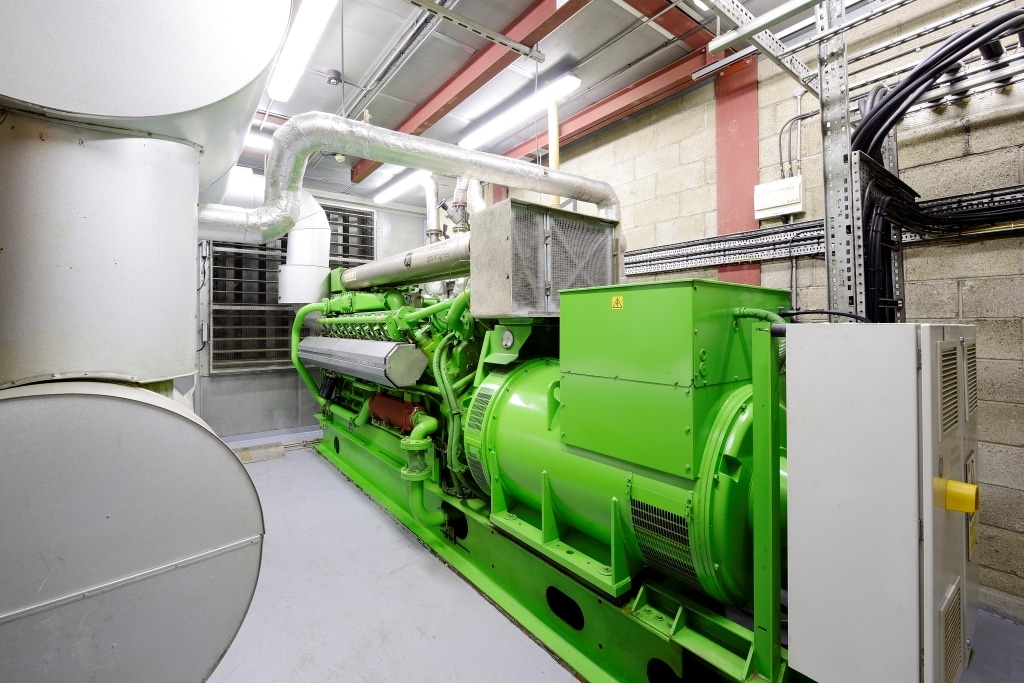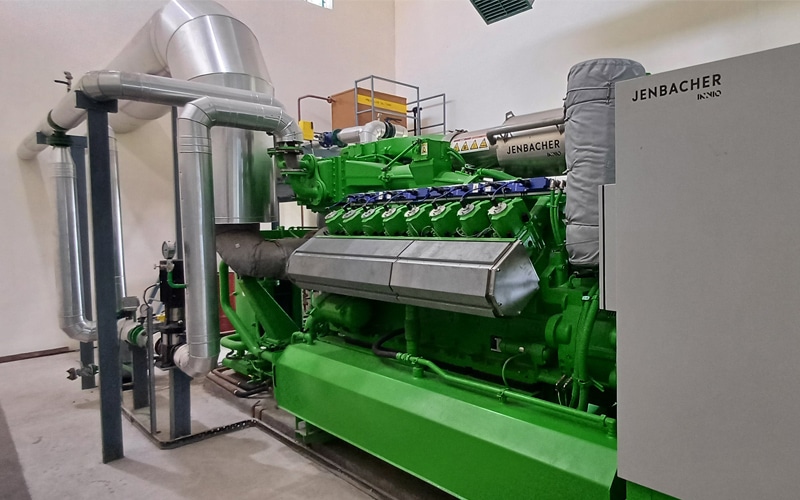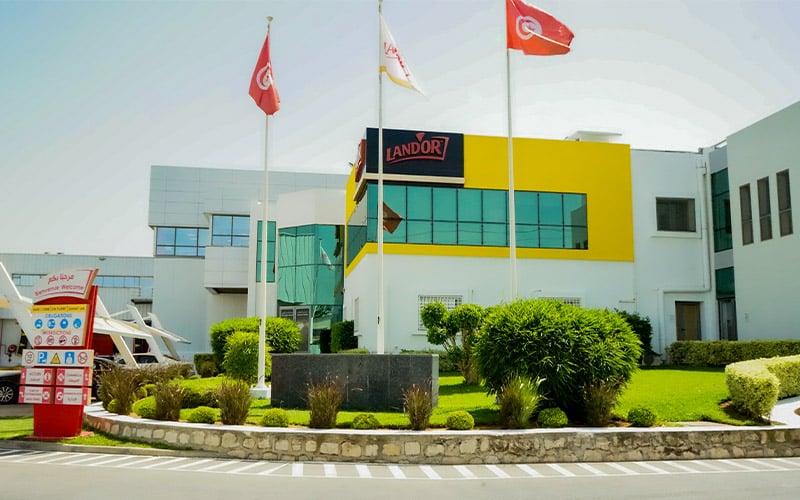 The cogeneration of electricity and heat is referred to as combined heat and power (CHP). CHP is highly fuel efficient as over 90% of the energy contained within the fuel can be converted into useful power.
The cogeneration of electricity and heat is referred to as combined heat and power (CHP). CHP is highly fuel efficient as over 90% of the energy contained within the fuel can be converted into useful power.
A consumer of electricity and heat normally has two main choices for their power needs. Their first option is to buy the electricity from the national power grid and gas from the gas distribution network, converting it into heat via a boiler. Depending upon the difference between the price of electricity and the price of gas – the ‘spark spread’ – the alternative is to self-generate power.
Natural gas as a fuel
Gas is a fuel with low carbon emissions. Natural gas is non-renewable, however it is characterised as being cleaner burning and has the lowest carbon emissions of any fossil fuels. Globally, available gas reserves and discoveries of non-conventional gas are helping to reduce futures prices, and long-term price trends are downwards.
CHP Developments
Self generation & CHP
The use as gas as a fuel source for self-generation is therefore attractive, both from an environmental and from a cost perspective. When used in a CHP gas engine such as GE’s Jenbacher product, power in the form of electricity and heat can be generated locally with minimal emissions and offsetting the requirement for the purchase of two separate energy types.
A typical CHP project is normally led by either the sites demand for heat or electricity. If it is electrically led, the primary important factor is electrical generation. If the scheme is led by heat, the local need for thermal energy is the primary driver and any additional electricity could be exported to the power grid.
Distributed power
Localised power production or distributed power, or district energy,is beneficial in a number of ways. Firstly transmission losses associated with sending electricity from large centralised power plants can be minimised. Next, the benefits of higher fuel efficiency through CHP can be realised, supplying heat to local users. As transmission losses are reduced and plant achieves high fuel efficiency carbon emissions are reduced. Finally, security of generation can be achieved if the unit is configured to operate in island mode. In the event of an electricity grid failure, the gas engine can work in island mode operation, helping to supply the local electricity user directly in isolation from the mains. Boston Scientific manufactures pacemakers for the global market in Clonmel in South Tipperary. Their facility is an example of the utilisation a CHP plant which provides over 2MW of power – 1MW of electrical and 1MW of thermal energy – to the site.
Trigeneration & Quadgeneration
Taking gas engine technology to the next level cogeneration has spun off additional technologies including trigeneration and quad generation. Through trigeneration a CHP system incorporates an absorption chiller. This chiller takes some of the heat produced from the CHP unit and delivers a source of cooling that can be used for refrigeration or for air conditioning. Contour Global’s facility in Knockmore, County Fermanagh is one of the pioneering facilities for quadgeneration. Here the bottling plant is able to recover CO2 from the exhaust of their trigeneration facility, scrub it to the highest standards, and utilise it for adding the fizz to soft drinks.
Biogas CHP
There are also sources of renewable gas that can also be utilised for CHP and/or for distributed power. Biogas is formed by the anaerobic decomposition of organic material including food waste or sewage, it can also be formed when waste is deposited in landfill sites. Bord na Móna are developing a major landfill gas to energy project at the Drehid facility near Allenwood in County Kildare. This facility will start to produce renewable power in 2014.
A second, less familiar type of renewable gas is wood gas. Wood gas resembles that of town-gas from the early 20th Century and is formed from the gasification of cellulose and lignin from wood. It comprises of a number of gases including methane, carbon monoxide and hydrogen. The technology in this form is not yet widely commercialised. In Newry, Kedco have developed a gasification process that utilises wood gas as a fuel for gas engines.
Renewable gases also have additional benefits over other renewable technologies. Wind turbines and solar photovoltaics are limited to producing electricity when the wind blows or the sun shines. Biogas contrasts to this and is able to generate electricity twenty four hours a day and seven days a week with downtime only for maintenance intervals. A typical Jenbacher gas engine operating on biogas is able to generate electricity continuously for over 95% of the year.
Summary
In summary, using gas for CHP is a highly efficient form of power production. It can help to reduce energy bills and carbon emissions. Ireland has been setting a strong pace globally with the technology and is at the forefront of the development of innovative energy efficient systems.




